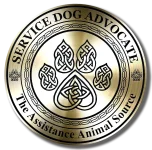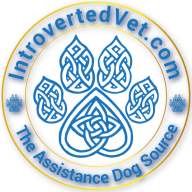[Court document can be Downloaded and read at: Reaves-v.-Immediate-Medical-Care within our Resource page]
By Seyfarth Shaw LLP on April 3, 2025

By: Minh N. Vu
Seyfarth Synopsis: A recent case from the U.S. District Court for the Middle District of Florida illustrates how businesses should handle scenarios where service animals present health risks to others with severe allergies.
We all know that public accommodations must allow service animals accompanying individuals with disabilities onto their premises, but what if doing so places others with severe allergies at risk? A recent Florida federal court’s decision provides insight on how this scenario (and others involving “direct threats” to health and safety) should be handled.
The plaintiff in this case used a dog which was trained to alert her to, and mitigate, self-harming behavior caused by post-traumatic stress disorder (“PTSD”), anxiety, and bipolar disorder. Specifically, the dog would press on plaintiff’s body, lick and claw her to “ground” her during episodes of anxiety. Based on these facts, the court concluded that the dog qualified as a service animal. The plaintiff brought the service dog to an appointment with a new doctor. When the doctor saw the dog, she informed her employee that she was severely allergic to dogs and could not see the plaintiff with the dog. The employee then informed the plaintiff that she could either see the doctor while the service dog remained with her companion, or she could reschedule to see another doctor with the dog. After the plaintiff became agitated and accused the medical practice of violating the ADA, the employee called the sheriff.
The court began its analysis by recognizing the Department of Justice’s guidance that “allergies are not enough to except a place of public accommodation from accommodating a service animal” and both the animal’s handler and the individual with allergies should be accommodated “by assigning them, if possible, to different locations within the room or different rooms in the facility.” However, the court held that “[d]espite this rule, a service animal may nonetheless be excluded if it poses a direct threat to the health and safety of persons providing or receiving services from an accommodation.” The court ultimately concluded that the medical practice had properly conducted “an individualized assessment” of the direct threat to the doctor and that its conclusion was objectively reasonable. The court focused on the doctor’s testimony about her severe allergy to dogs, based on her prior consultation with her doctor and her own knowledge of her allergy and its symptoms. The court also focused on the reasonable modifications offered to the plaintiff that would allow her to receive medical services, albeit from a different physician who did not have a dog allergy, which the plaintiff rejected. It also considered the fact that the medical practice made a one-time decision “on the spot,” noting that the regulation requires only a “reasonable judgment” in determining if a direct threat exists under the circumstances.
There are a few important takeaways from this decision:
First, it highlights the importance of considering (1) the specific facts presented by a situation in assessing whether a service animal poses a direct threat to someone else at the public accommodation, and (2) measures that would allow the person with a service animal to receive services from the public accommodation while mitigating the risk to the health and safety of others. In this case, the medical practice considered the severity of the doctor’s allergy, and offered other options which would have allowed the plaintiff to receive medical services.
Second, this case was decided only after an evidentiary trial, underscoring the difficulty of securing early dismissals of these types of cases. Thus, businesses that face unruly behavior by animals or animals that otherwise pose health risks should be thoughtful in handling these situations. They should conduct a fact-specific, individualized assessment of the risk that includes an exploration of alternatives that would mitigate that risk but still provide equal access to their products and services. The case also illustrates how businesses should be prepared to go the distance in litigation if necessary (i.e. summary judgment and/or trial) if they decide to exclude the animal on the basis of a “direct threat” that it presents.
















